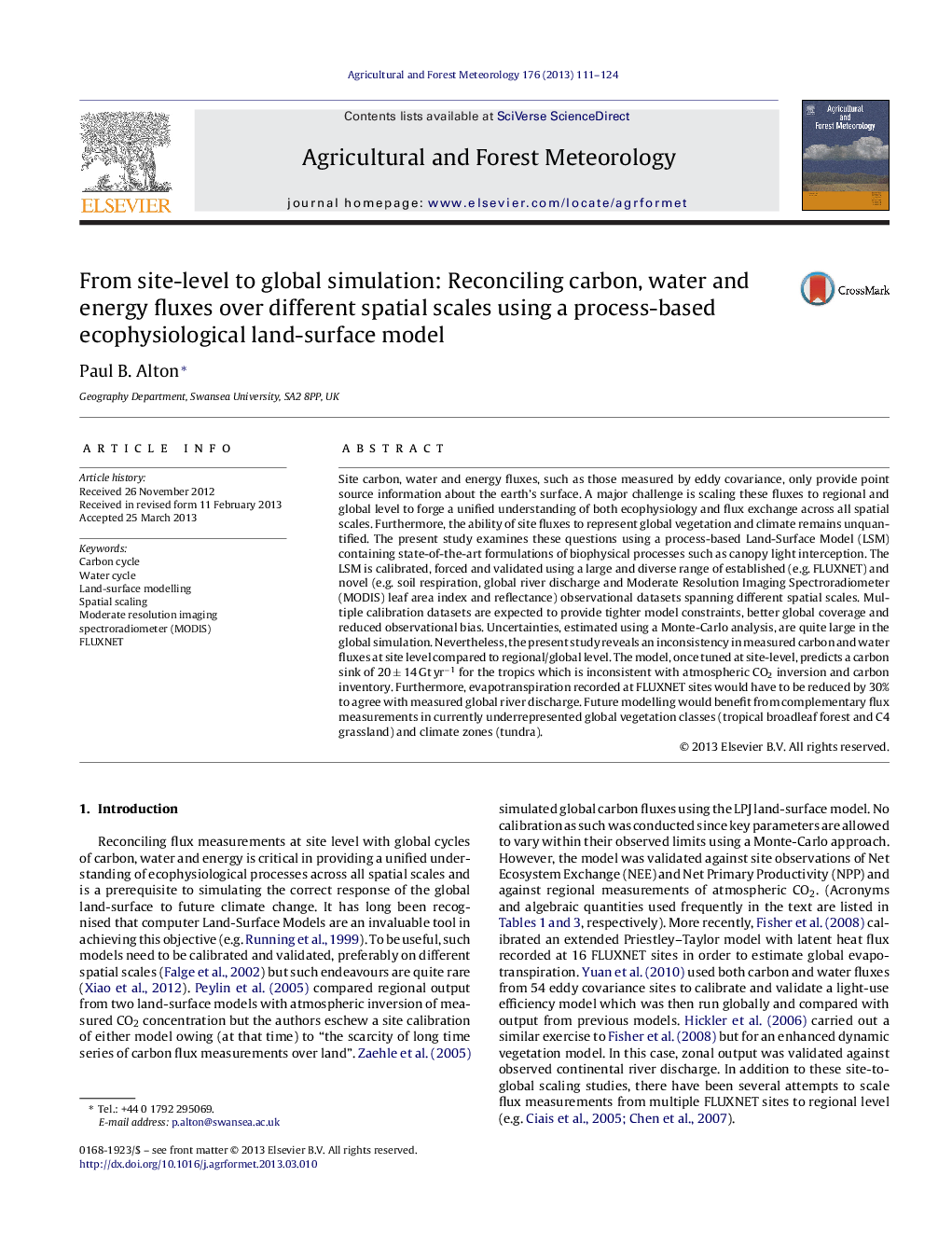| کد مقاله | کد نشریه | سال انتشار | مقاله انگلیسی | نسخه تمام متن |
|---|---|---|---|---|
| 81813 | 158352 | 2013 | 14 صفحه PDF | دانلود رایگان |

• Inconsistencies between measured fluxes over different spatial scales.
• 30% reduction in site evaporation to agree with global river discharge.
• Site fluxes needed in underrepresented tropical forest and C4 grassland.
• Site fluxes needed in underrepresented climate zones (tundra).
• Land-surface models require field measurements of tap roots.
Site carbon, water and energy fluxes, such as those measured by eddy covariance, only provide point source information about the earth's surface. A major challenge is scaling these fluxes to regional and global level to forge a unified understanding of both ecophysiology and flux exchange across all spatial scales. Furthermore, the ability of site fluxes to represent global vegetation and climate remains unquantified. The present study examines these questions using a process-based Land-Surface Model (LSM) containing state-of-the-art formulations of biophysical processes such as canopy light interception. The LSM is calibrated, forced and validated using a large and diverse range of established (e.g. FLUXNET) and novel (e.g. soil respiration, global river discharge and Moderate Resolution Imaging Spectroradiometer (MODIS) leaf area index and reflectance) observational datasets spanning different spatial scales. Multiple calibration datasets are expected to provide tighter model constraints, better global coverage and reduced observational bias. Uncertainties, estimated using a Monte-Carlo analysis, are quite large in the global simulation. Nevertheless, the present study reveals an inconsistency in measured carbon and water fluxes at site level compared to regional/global level. The model, once tuned at site-level, predicts a carbon sink of 20 ± 14 Gt yr−1 for the tropics which is inconsistent with atmospheric CO2 inversion and carbon inventory. Furthermore, evapotranspiration recorded at FLUXNET sites would have to be reduced by 30% to agree with measured global river discharge. Future modelling would benefit from complementary flux measurements in currently underrepresented global vegetation classes (tropical broadleaf forest and C4 grassland) and climate zones (tundra).
Journal: Agricultural and Forest Meteorology - Volume 176, 15 July 2013, Pages 111–124